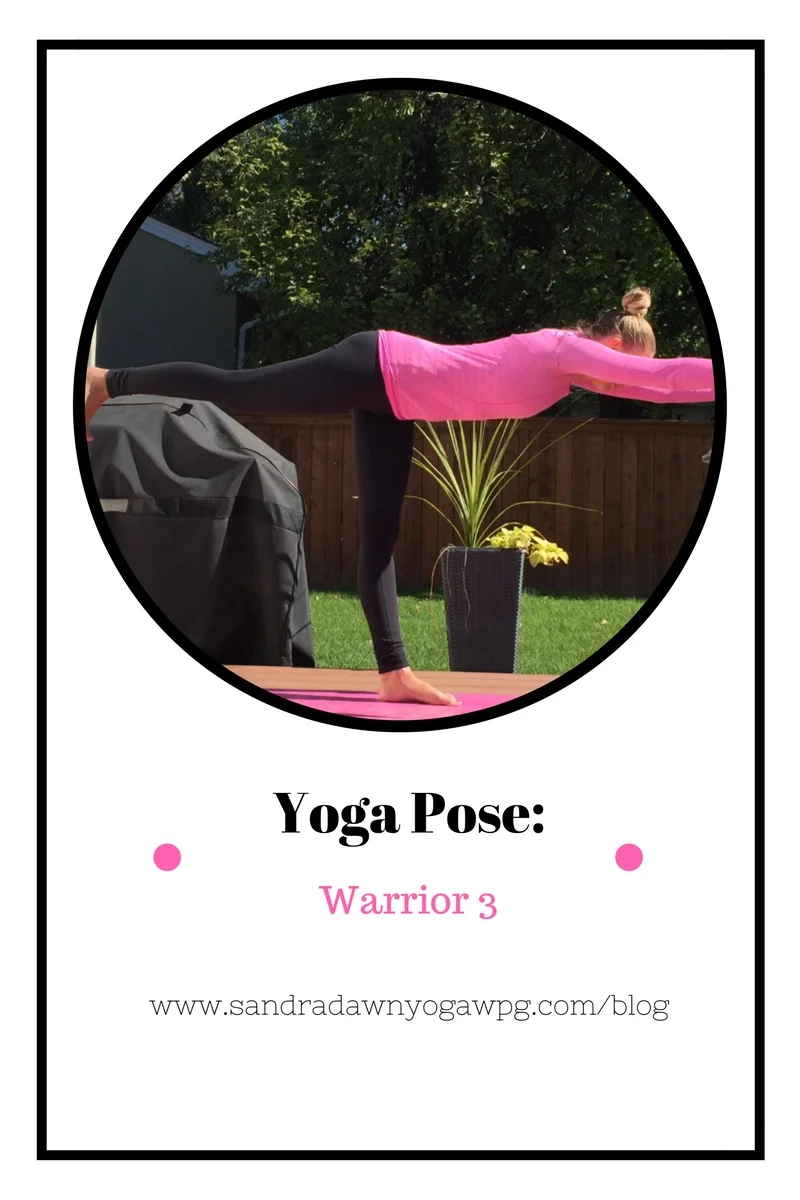Ohhh the Yoga Plank - loved by some and loathed by even more. Plank Pose is a strengthening yoga pose that works the arms, legs, and core muscles. It is often practised as part of your Sun Salutation or Flow, so usually you aren't left working in it for too long, which can mean you aren't always in proper alignment. Today I wanted to break the Yoga Plank down a bit more to show you some "Do's" and "Do Not's" while in the pose, simply because it's a very easy pose to be a bit "sloppy" in. Unfortunately, if you aren't doing Plank correctly, you are missing out on some of it's wonderful strengthening properties, but it will still feel like a very difficult pose (maybe even more difficult than if you are in proper alignment). Keep reading for my list of "Do's" and "Don'ts" for your Yoga Plank.
Yoga Pose: Warrior 3
Warrior 3 - Virabhadrasana 3 - is perhaps the most challenging of all the Warriors as it requires strength, balance and flexibility. This pose provides many benefits to it's practitioner, including strengthening the legs, feet and ankles, strengthening the core muscles, opening and toning the shoulder muscles, and helping to improve balance. Keep reading to learn how to move into this pose. Since balancing in this pose can be especially difficult for beginners, I have also included the supported version of this pose as well. Enjoy!
3 things to Expect from an Alignment Focused Beginner Yoga Class
Photo found on http://www.dailyyogareflections.com/
If you have never taken a Yoga class before, it is likely you may feel a bit anxious wondering what is in store for you. Keep reading to learn three things you can expect from the alignment focused beginner yoga class that I teach.
1. Demonstration and Instruction: In the alignment focused beginner classes that I teach, I always demonstrate a pose before the group moves into it. This way, the participant has both visual and verbal cues to work off of when moving into a pose for the first time. It also helps decrease the awful craning of the neck that often happens when you are trying to move into a pose and watch the instructor at the same time.
2. Props and Modifications: No two people are the same and no two bodies are the same. It is not realistic to think that everyone will be able to access a pose in the same way. Since people vary in their level of flexibility, strength, and activity level – especially in a beginner class – I feel it is important to provide modifications of the poses that will work for everyone. For example, if you can’t touch the toes I would give you a Yoga Block to press your hands in to. Or, when learning triangle pose, it often takes people out of alignment to try and place their hand on the floor, so instead, use a block to support the hand.
Yoga Block Photo found on http://yogauthority.org/
3. Slower pace: As opposed to a flow style class, where you move from pose to pose without a break in between, the alignment focused beginner class is a slower pace. Each pose is broken down, demonstrated, and practiced. There is time for questions, time to find the correct alignment or modification for the pose, and most importantly, time to feel your body and breath in each pose.
If you or someone you know would benefit from an alignment focused beginner class – there is only one week left to sign up! For more information visit the Your Best Yoga page here.
If you have any questions or concerns about signing up, please contact me directly at sandrayogawpg@gmail.com
Namaste :)



